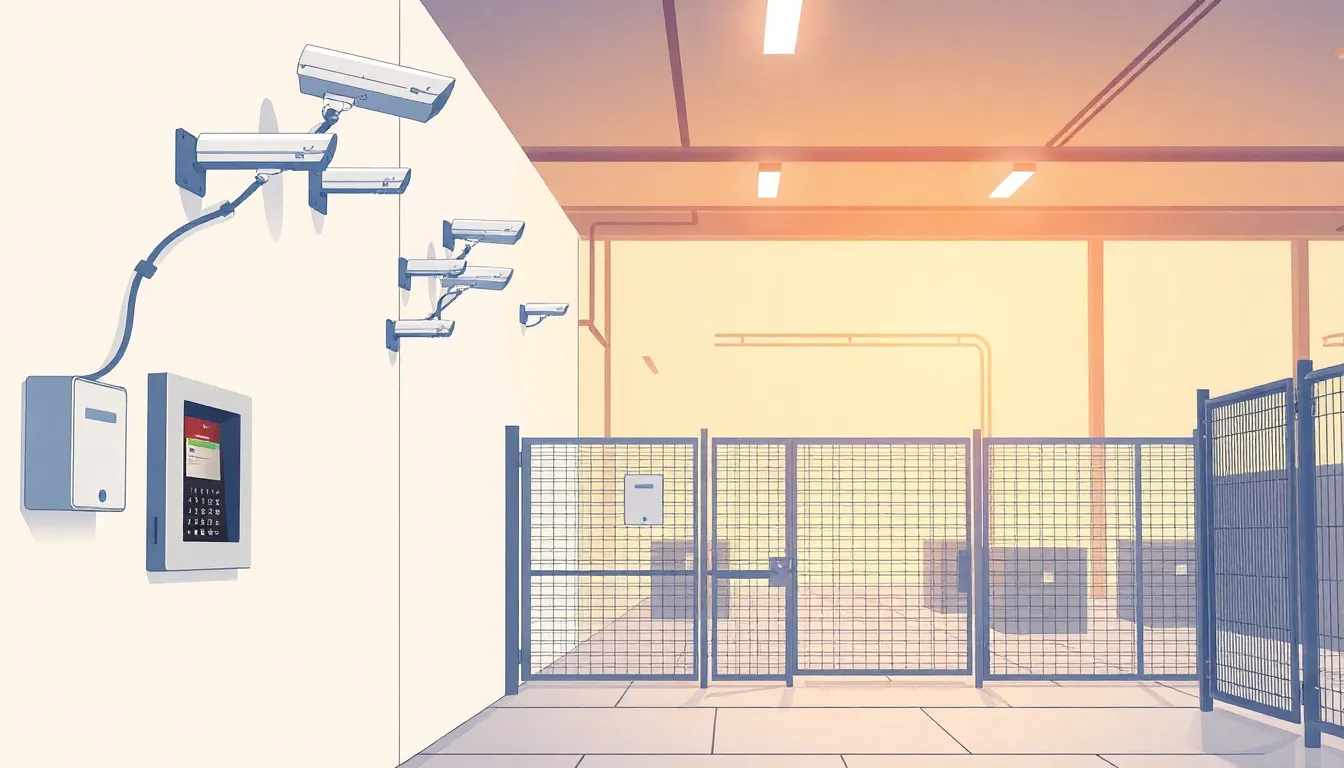In a world where cyber threats lurk around every corner, security technology has become the superhero we didn’t know we needed. Imagine a digital fortress that not only keeps the bad guys at bay but also makes you feel like a tech-savvy wizard. With advancements popping up faster than a cat meme on the internet, it’s time to dive into the realm of security technology and discover how it can safeguard your data and peace of mind.
Table of Contents
ToggleOverview of Security Technology
Security technology encompasses tools and systems designed to protect digital information from unauthorized access and cyber threats. Organizations and individuals increasingly rely on various security technologies to defend against attacks. Network security solutions defend against intrusion by monitoring and controlling incoming and outgoing traffic.
Encryption technologies safeguard data transmission, ensuring confidentiality and integrity. Multifactor authentication adds an additional layer of security, requiring users to provide two or more verification factors. Firewalls serve as barriers between trusted networks and untrusted ones, filtering traffic based on predetermined security rules.
Antivirus and anti-malware software detect and prevent harmful software from compromising systems. Intrusion detection and prevention systems monitor networks for suspicious activities and block potential threats. Regular software updates help maintain security by patching vulnerabilities in systems and applications.
Cloud security offers protective measures specifically for cloud environments, addressing unique threats associated with data storage off-premises. Endpoint security focuses on protecting devices such as laptops and smartphones from threats. Data loss prevention technologies monitor sensitive information to prevent accidental or intentional exposure.
Artificial intelligence and machine learning enhance security measures by analyzing patterns and recognizing anomalies in network traffic. These technologies frequently adapt to evolving threats, allowing for quicker responses to potential breaches. The integration of security technology into business operations has become essential for maintaining trust and compliance in an increasingly digital world.
Types of Security Technology

Multiple types of security technology exist to protect against various threats. They encompass physical security systems and cybersecurity solutions.
Physical Security Systems
Physical security systems focus on protecting physical assets. They include surveillance cameras, access control systems, and alarm systems. Surveillance cameras monitor entrances, perimeters, and vulnerable areas. Access control systems manage entry through keycards or biometric scans. Alarm systems notify authorities of unauthorized entries or breaches. Further, barriers like gates and fences enhance overall protection. Emergency response plans often integrate these systems to ensure rapid action during incidents.
Cybersecurity Solutions
Cybersecurity solutions defend against digital threats that target systems and data. Firewalls act as barriers, filtering incoming traffic and preventing unauthorized access. Antivirus software detects and eliminates malicious software from devices. Encryption secures sensitive information by transforming it into unreadable formats. Multifactored authentication enhances access control by requiring multiple verification methods. Intrusion detection systems identify and respond to potential breaches in real-time. Regular updates to these solutions strengthen resistance against emerging cyber threats as they evolve.
Importance of Security Technology
Security technology plays a critical role in today’s digital age, preventing unauthorized access and cyber threats. Its implementation significantly enhances data protection and user trust.
Risk Mitigation
Risk mitigation hinges on effective security technology. Organizations minimize potential threats through solutions like firewalls and intrusion detection systems. Every component contributes to a layered defense strategy. Sophisticated tools analyze data patterns to identify vulnerabilities and automate responses. Regular updates on security software enhance resilience against evolving cyber-attacks. By investing in security technology, companies drastically reduce the likelihood of data breaches and financial losses.
Compliance and Regulations
Compliance and regulations drive the demand for robust security technology. Many industries adhere to strict guidelines like GDPR and HIPAA, necessitating data protection measures. Failing to comply can lead to hefty fines and reputational damage. Security technologies help organizations meet these requirements while safeguarding sensitive information. Systems that log data access support audits and reporting obligations. Additionally, multifactor authentication strengthens access control and meets compliance mandates. Adopting up-to-date security solutions demonstrates commitment to regulatory standards and enhances overall corporate integrity.
Emerging Trends in Security Technology
Advancements in security technology are reshaping how organizations protect their assets. Key trends include artificial intelligence and cloud security solutions, which play critical roles in effective defense strategies.
Artificial Intelligence in Security
Artificial intelligence enhances security protocols by processing vast amounts of data quickly. Machine learning algorithms detect anomalies and respond to threats with unprecedented speed. These AI-driven systems adapt to evolving risks, making them invaluable for maintaining security. Organizations increasingly use AI to automate routine tasks, freeing up human resources for more complex challenges. Cybersecurity solutions that incorporate AI improve accuracy in threat identification, thus reducing false positives. AI’s predictive analytics also helps in anticipating potential breaches, allowing for proactive security measures.
Cloud Security Solutions
Cloud security solutions offer flexible and scalable options for data protection. Organizations migrate to cloud environments, requiring robust security measures to safeguard sensitive information. Implementing encryption and access controls ensures only authorized users can access data stored in the cloud. Security frameworks incorporated in cloud services provide automated monitoring and threat detection. Many cloud providers emphasize compliance with regulations, helping organizations meet legal requirements. As cloud services evolve, integrating advanced security features into them is crucial for enhanced protection against cyber threats.
Challenges in Security Technology
Security technology faces numerous challenges that hinder its effectiveness in protecting sensitive data. Cyber threats continue to evolve, with hackers deploying sophisticated techniques that outpace standard defense mechanisms. Organizations struggle to keep up, as maintaining up-to-date security software demands constant attention and resources.
Compliance with regulations adds another layer of complexity. Adhering to frameworks like GDPR and HIPAA is crucial, yet many organizations find it difficult. Non-compliance leads to penalties and reputational damage, making proactive management essential for risk mitigation.
Budget constraints pose significant problems as well. Investing in the latest security technologies often requires significant financial resources, which many organizations lack. Limited budgets can mean that critical security updates and systems may receive inadequate attention.
User education remains another hurdle. Employees often overlook or misunderstand security protocols, which can lead to unintentional vulnerabilities. Training programs must be comprehensive and ongoing to ensure all staff understand their role in safeguarding data.
Integration of new technologies introduces additional challenges. Adapting existing infrastructures to incorporate advanced tools like artificial intelligence can cause disruption. Successful integration demands thorough planning and careful execution, which many organizations struggle to achieve.
Lastly, the constant evolution of cyber threats makes it difficult for security technologies to stay relevant. Emerging trends like IoT and cloud services present new vulnerabilities that security systems must address. Organizations that fail to adapt may expose themselves to significant risks, jeopardizing both data integrity and trust.
Security technology is no longer just an option; it’s a necessity in today’s digital environment. As cyber threats evolve organizations must adopt advanced security measures to protect their sensitive data. The integration of tools like AI and cloud solutions enhances resilience and adaptability against emerging risks.
Staying compliant with regulations further emphasizes the importance of robust security systems. Regular updates and employee training play crucial roles in maintaining effective defenses. By investing in the right technologies and strategies organizations not only safeguard their assets but also build trust with clients and stakeholders. Embracing security technology is essential for thriving in a complex digital landscape.




